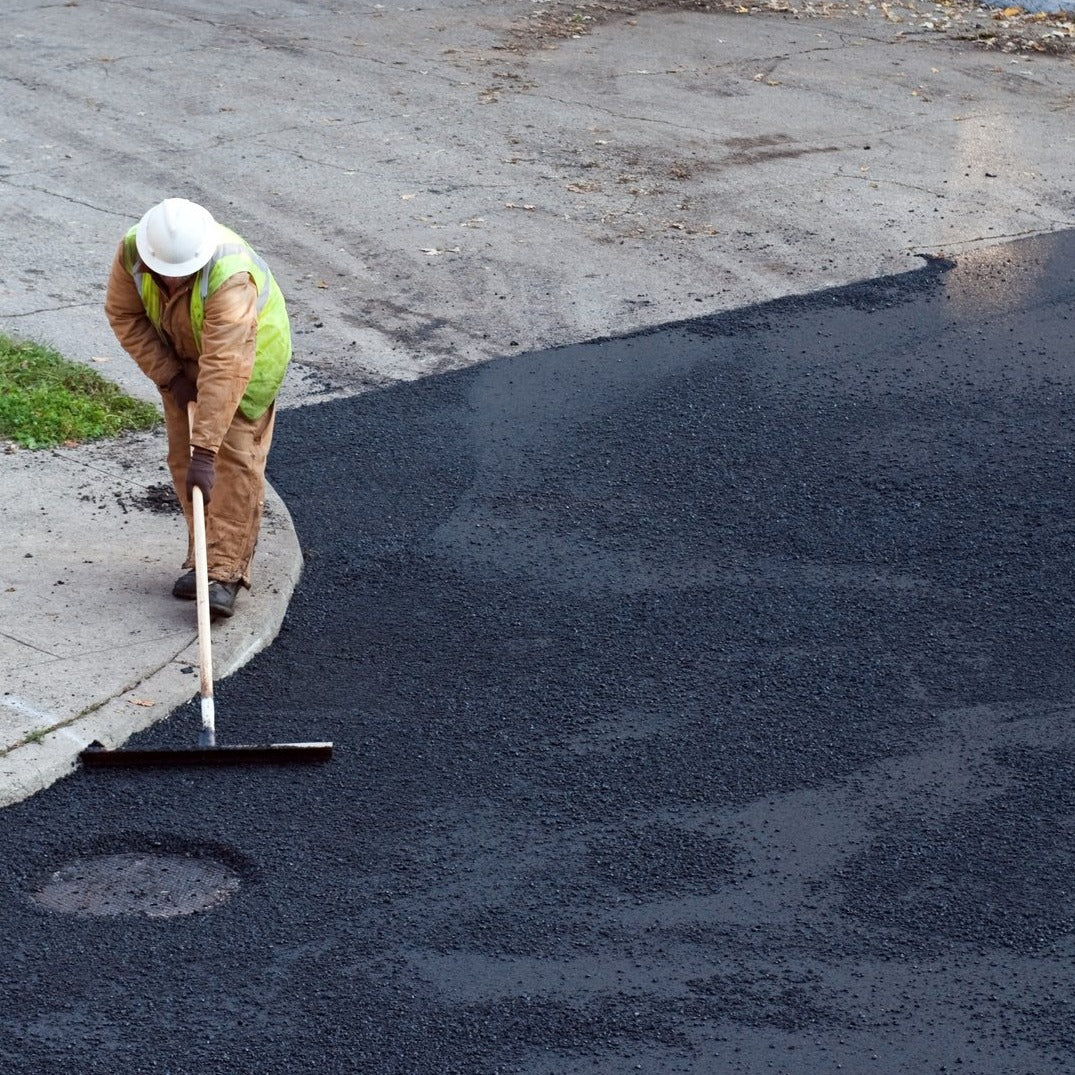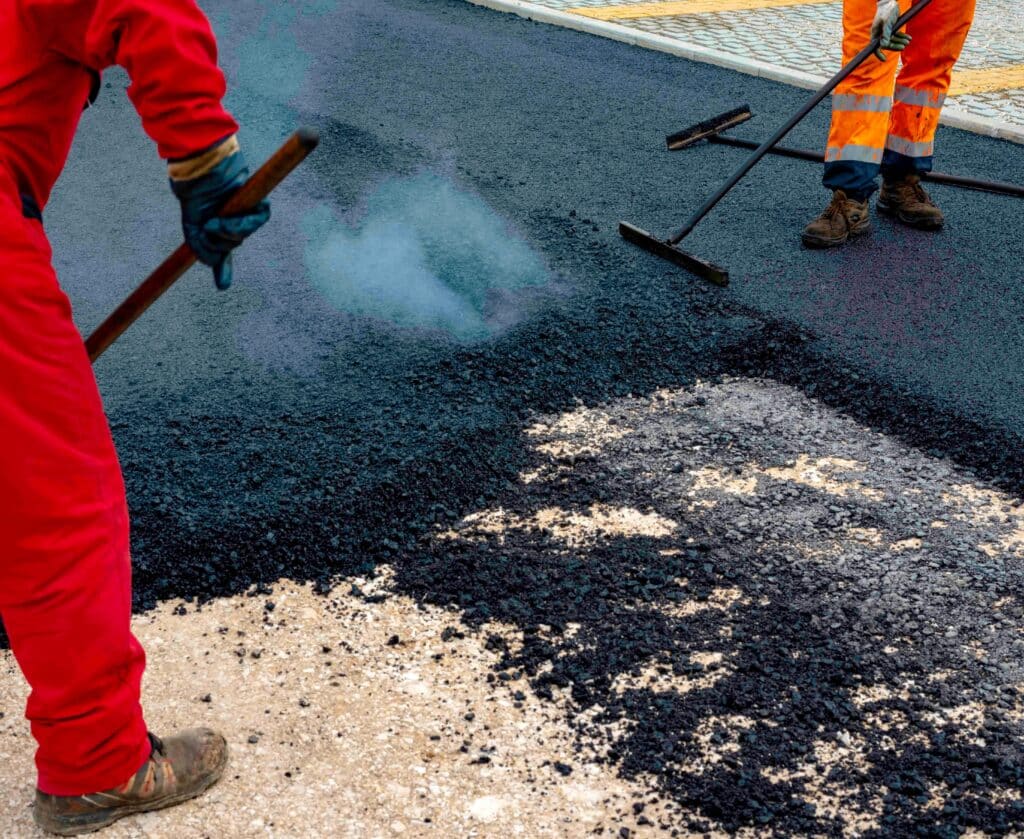Unlocking the Tricks of Hot Mix Asphalt Modern Technology
Discovering the depths of warm mix asphalt innovation uncovers a globe where precise processes and exact solutions merge to form our roads and facilities. The fusion of binders, fillers, and aggregates isn't just a construction job but a strategic orchestration of sturdiness and efficiency. As we peer into the detailed dancing of parts, a tapestry of strength and sustainability unfolds. What lies under this surface area of asphaltic proficiency, and what tricks wait to be unveiled in the world of leading advancements?
Importance of Warm Mix Asphalt
Hot Mix Asphalt plays an important duty in contemporary facilities growth due to its resilience and cost-effectiveness. As the most typically made use of paving product for roads, freeways, and car parking whole lots, Hot Mix Asphalt supplies a variety of benefits that add to its relevance in building and construction tasks.
The sturdiness of Hot Mix Asphalt stems from its composition, which includes accumulations, binder, and filler products that are carefully selected and blended to meet details efficiency demands. In general, the relevance of Warm Mix Asphalt in framework development can not be underrated, as it proceeds to be a cornerstone of modern building and construction methods.
Elements of Asphalt Mixes
The composition of asphalt blends includes thoroughly selected aggregates, binder, and filler materials that are crucial for attaining certain performance requirements. Aggregates are the key element of asphalt mixes, offering toughness and stability. These accumulations can be natural, such as crushed rock or crushed stone, or artificial, like recycled materials from old pavements. The binder, commonly asphalt or asphalt concrete, holds the accumulations together and gives flexibility and sturdiness to the mix. The choice of the binder is vital as it directly affects the mix's efficiency in various weather. Fillers, such as moisturized lime or Portland concrete, are made use of to improve the mix's workability and aging resistance. Angled Parking.
The mix and proportion of these components play a substantial function in determining the quality and performance of the asphalt mix. Designers carefully design the mix to fulfill specific needs, thinking about variables like traffic quantity, climate problems, and pavement lifespan. Proper choice and harmonizing of accumulations, binder, and fillers are necessary for developing resilient, long-lasting asphalt pavements.
Combining and Manufacturing Strategies

As soon as the accumulations are chosen, the binder, commonly asphalt concrete, is included in bind the materials together. The binder's quality and amount dramatically impact the mix's toughness, versatility, and resistance to ecological variables. In addition, fillers like hydrated lime or Rose city concrete might be included to boost details attributes of the asphalt mix, such as its workability or wetness resistance.
Throughout manufacturing, the accumulations and binder are warmed, usually in between 250-325 ° F(121-163 ° C ), to promote blending and make sure proper layer of the accumulations. The mixing procedure must be comprehensive to achieve an uniform mixture that advertises the wanted performance qualities of the asphalt. Various methods, such as batch mixing or drum blending, are used to accomplish high-grade and regular asphalt mixes for construction projects.
Elements Affecting Asphalt Efficiency
Variables influencing asphalt efficiency encompass a range of variables that affect the longevity, durability, and total quality of asphalt pavements. One vital factor is the high quality of products used in the asphalt mix. The type and resource of accumulations, the binder high quality, and the ingredients all play a considerable duty in identifying the efficiency of the asphalt sidewalk. The rank of aggregates is critical as it affects the mix's workability, security, and resistance to cracking and rutting.

Environmental problems also influence asphalt performance. Temperature variations, moisture seepage, and traffic tons can all influence the architectural honesty of the pavement. Style factors to consider, such as sidewalk thickness and drainage, are crucial in making sure the long-lasting performance of the asphalt sidewalk. By very carefully taking into consideration these specialists, factors and engineers can maximize asphalt performance and enhance the solution life of sidewalks.
Sustainable Practices in Asphalt Technology

Furthermore, the development of warm-mix asphalt (WMA) innovations has actually acquired grip in recent years. WMA permits the manufacturing and positioning of asphalt blends at lower temperature levels compared to typical hot-mix asphalt, leading to lowered energy consumption and greenhouse gas exhausts. Moreover, using permeable asphalt blends can aid reduce stormwater drainage issues by enabling water to infiltrate with the sidewalk and right into the ground, advertising natural water purification and recharge processes. By executing these lasting methods, the asphalt market can add to constructing an extra durable and ecologically pleasant infrastructure network.
Verdict
To conclude, warm mix asphalt innovation plays a critical duty in modern framework development because of its sturdiness and cost-effectiveness. By meticulously balancing elements, employing appropriate blending techniques, and thinking about numerous elements, designers can create high-grade asphalt mixes that endure hefty website traffic loads and rough weather. Accepting sustainable techniques, such as using warm-mix innovations and recycled products, additionally boosts the environmental friendliness of asphalt innovation.
Mixing and manufacturing techniques in warm mix asphalt technology involve the specific mix and Your Domain Name processing of aggregates, binder, and fillers to produce a resilient and high-performance asphalt mix.Factors affecting asphalt efficiency encompass a range of variables that impact the resilience, long life, and general quality of asphalt pavements. Lasting methods in asphalt technology incorporate various efforts aimed at minimizing the environmental effect of asphalt production and paving procedures. By integrating redeemed asphalt sidewalk (RAP) and recycled asphalt tiles (RAS) into brand-new asphalt blends, the sector can considerably decrease the consumption of raw products and power, while also lowering garbage dump waste.
WMA allows for the manufacturing and placement of asphalt blends at lower temperature levels compared to standard hot-mix asphalt, resulting in minimized energy intake and greenhouse gas exhausts.